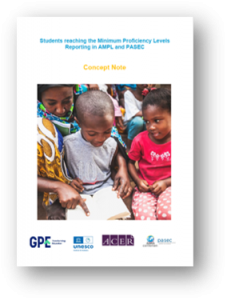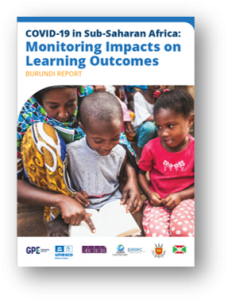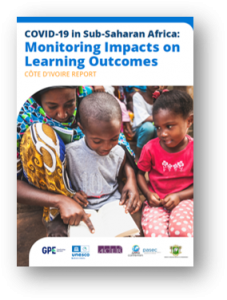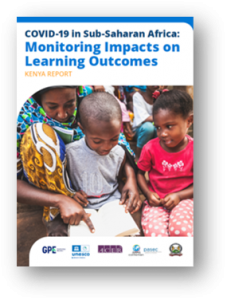Publications
The COVID-19 MILO (Monitoring Impacts on Learning Outcomes) project was designed to provide information on the impact of the pandemic on learning outcomes in Africa. As countries work towards the goal of meeting Sustainable Development Goal (SDG) 4.1.1 (b), it is essential that progress towards this goal continues to be monitored.
The MILO project was implemented to provide a way for countries to measure learning progress against SDG 4.1.1 (b) prior to, during and after the pandemic.
COVID-19 in Sub-Saharan Africa: Monitoring Impacts on Learning Outcomes - Main Report
| Full report | ||
| Executive Summary | ||
| Chapter 1 | Introduction | |
| Chapter 2 | The reading assessment | |
| Chapter 3 | The mathematics assessment | |
| Chapter 4 | Performance of MILO countries in reading and mathematics | |
| Chapter 5 | National contexts of teaching and learning during COVID-19 | |
| Chapter 6 | School contexts of teaching and learning during COVID-19 | |
| Chapter 7 | Student contexts of teaching and learning during COVID-19 | |
| Chapter 8 | Discussion of findings | |
| References | ||
| Appendix A | Technical description of psychometric methods used to link with SDG 4.1.1b | |
| Appendix B | Technical descriptions of data analyses used to link with past national assessment results | |
| Appendix C | Supplementary tables |
Students Reaching the Minimum Proficiency Levels Reporting AMPL and PASEC
 This note provides supplementary information to the MILO Main Report (UIS & ACER, 2022). This concept note provides information on the reporting of the proportion of students reaching the Minimum Proficiency Levels (MPLs) in 2019 as reported in the MILO project and in PASEC (Programme for the Analysis of Education Systems) regional assessment in 2019.
This note provides supplementary information to the MILO Main Report (UIS & ACER, 2022). This concept note provides information on the reporting of the proportion of students reaching the Minimum Proficiency Levels (MPLs) in 2019 as reported in the MILO project and in PASEC (Programme for the Analysis of Education Systems) regional assessment in 2019.
Details on the Assessments for Minimum Proficiency Levels (AMPL) can be found in Chapter 2 for reading assessment and Chapter 3 for mathematics assessment used in the MILO project. The reading and mathematics results can be found in Chapter 4.






